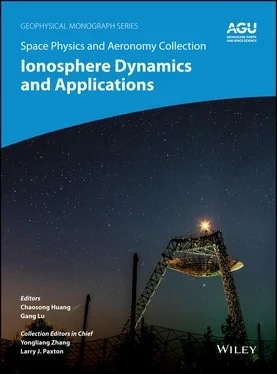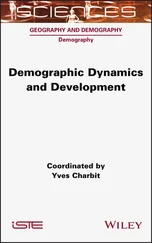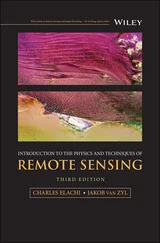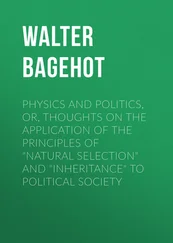Patches are not necessarily a structure passively embedded in large‐scale convection but can be associated with flow channels (Kivanc & Heelis, 1997; Balmforth, 1999; Lockwood et al., 2005; Maynard et al., 2006; Thomas et al., 2013; Zou et al., 2015a; Wang et al., 2016b). Flow channels are seen even deep in the polar cap, and they can exist as quasi‐stable structures because flow channels are connected to their high‐altitude driver via FACs (Zou et al., 2016). Weak soft electron precipitation is also associated with patches (Zou et al., 2017), and the presence of precipitation on open field lines indicates that the flux tube of the patch has different properties from those of surrounding plasma and is possibly connected to a solar‐wind driver. The flow channel system in the polar cap resembles ones at the cusp, nightside auroral oval, and polar cap arc ( Fig. 3.2), except that precipitation and FAC magnitudes are much smaller due to low conductance and smaller energy content on the open field lines.
Structures in the polar cap also exist beyond polar cap patches. Precipitation in the polar cap can also be structured (Newell et al., 1997; Huang et al., 2014), and even smaller‐scale flow and density structures of less than 100 km can occur (Gondarenko & Guzdar, 2004; Golovchanskaya & Kozelov, 2010). Those are attributed to gradient drift instability (GDI) and could connect to density irregularities that create radio signal scintillation. Polar cap convection involves mesoscale flow channels of some tens to hundreds km horizontal size particularly during quiet and weakly disturbed conditions (Sojka & Schunk, 1988; Taguchi et al., 1995; Matsuoka et al., 1996). Under northward IMF with large | B y|, those are typically associated with polar cap arcs (Carlson et al., 1988; Koustov et al., 2008). Polar cap arcs are approximately Sun‐aligned auroral arcs in the polar cap, associated with a few keV or less of electron precipitation (Robinson & Mende, 1990). Similar to arcs in the auroral oval, polar cap arcs are associated with a wedge‐type current system where flow channels with a few kV potential drop are located between upward and downward FACs (Robinson et al., 1987; Maggiolo et al., 2012). While dawn‐dusk motion of polar cap arcs is typically controlled by IMF B y(Valladares et al., 1994; Hosokawa et al., 2011), dawnside polar cap arcs can show quasi‐periodic poleward motion regardless of the IMF (Shiokawa et al., 1996). While polar cap arcs are typically a quasi‐static structure with slow dawn‐dusk motion, those can also involve substantial antisunward motion similarly to polar cap patches. Such motion particularly occurs for arcs that are associated with lower energy (hundreds of eV) precipitation, and those arcs can actively interact with the nightside auroral oval (Nishimura et al., 2013a; Zou et al., 2015b). Such soft electron precipitation and large electric field also effectively heat plasma and create upflows (Perry et al., 2015).
3.4 NIGHTSIDE AURORAL OVAL
Localized and transient structures in the nightside auroral oval ( Fig. 3.2) are primarily driven by electromagnetic and precipitation energy from the magnetotail, and ionosphere observations are useful for highlighting magnetosphere‐ionosphere coupling processes. Here we focus on ionosphere processes, and related magnetosphere processes are described in the companion book (Nishimura et al., in preparation).
Auroral arcs are one of the most common auroral features. Arcs typically have widths between several hundred m and tens of km (Knudsen et al., 2001; Partamies et al., 2010). Quasi‐static arcs are associated with inverted‐V electron precipitation (Stenbaek‐Nielsen et al., 1998), while arcs with vortical forms such as curls (~5 km wavelength along the arc; Hallinan & Davis, 1970) involve Alfvenic precipitation (Chaston et al., 2010). Quiet arcs at evening to premidnight hours are located within the large‐scale upward Region‐1 FAC (Wu et al., 2017). The most intense arc is typically located close to the Region‐1/Region‐2 FAC boundary (Ohtani et al., 2010; Coroniti & Pritchett, 2014), and fast azimuthal flow channels are also seen at this boundary (Archer et al., 2017). While the substorm growth phase arc can also be found near the same boundary (Marghitu et al., 2009; Jiang et al., 2012), the growth phase arc migrates into the downward Region‐2 FAC during the late growth phase, forming two or more upward FACs in the auroral oval (Nishimura et al., 2012; Motoba et al., 2015). Such multipolar FACs tend to occur near midnight associated with substorms (Wu et al., 2017).
Arcs are associated with enhanced precipitation, FAC, and electric field, and those drive active ionosphere feedback. Heating by precipitation and electric field drives plasma upflows, and fast flows enhance recombination. Those processes result in dynamic density structures (Zettergren et al., 2014; Lynch et al., 2015). The Alfvén resonator associated with FACs also contributes to create smaller‐scale density structures (Cohen et al., 2013).
Poleward boundary intensifications (PBIs) are auroral brightenings along the poleward boundary of the auroral oval (Lyons et al., 1999). PBIs are more intense during geomagnetically active times but can occur at all levels of geomagnetic activity. PBIs involve intense broad‐band Alfvénic electron precipitation (Mella et al., 2011). Cluster spacecraft observations showed that a growth of PBI corresponds to enhanced Alfvénic precipitation and then quasi‐static inverted‐V precipitation (Hull et al., 2016). PBIs are often followed by equatorward‐moving auroral arcs emanating from them. Those are called auroral streamers to distinguish from more stable east‐west oriented arcs. PBIs and streamers are the ionospheric signature of flow bursts in the nightside plasma sheet (Lyons et al., 1999) and a wedge‐type current system, where streamers mark upward FACs on the duskward edge of flow bursts (Sergeev et al., 2004). Radar observations show that streamers are located along the duskward edge of flow channels, where flows are generally substantially faster than large‐scale background convection speed (Shi et al., 2012; Gallardo‐Lacourt et al., 2014a; Pitkanen et al., 2011; Gabrielse et al., 2018). Even during storm times, fast flow channels and structured FACs are found to be the dominant mode of nightside auroral convection during the storm main phase (Lyons et al., 2016a).
The most prominent auroral structure is the auroral substorm. Details of a typical substorm auroral sequence are described by Akasofu (1964) and Voronkov et al. (2003). Substorm auroral onset is characterized by sudden brightening (initial brightening) of one of the growth‐phase auroral arcs within the equatorward portion of the auroral oval. Initial brightening involves wavy modulation of auroral intensity along the arc, called beads or rays depending on looking angles (Donovan et al., 2006). Beads are associated with intense flow oscillation (Hosokawa et al., 2013; Gallardo‐Lacourt et al., 2014b).
During poleward expansion of the arc, numerous auroral streamers originate in the vicinity of the poleward expanding arc and propagate equatorward. Individual streamers are associated with an intense wedge‐type current system and are a major contributor to local magnetic bays in ground magnetic field (Lyons et al. 2013). Although individual streamers are localized, a number of streamers arise during the expansion phase, and create modulation of the large‐scale substorm current wedge (SCW) (Forsyth et al., 2014). Streamers are associated with intense flows and particle injections into the inner magnetosphere and thus intensify various types of auroral activity in the equatorward portion of the auroral oval and subauroral ionosphere (Henderson, 2013), including pulsating aurora (Nishimura et al., 2018b) and omega bands (Henderson et al., 2006; Nishimura et al., 2013b). Diffuse auroral patch formation during substorms (Shiokawa et al., 2014) could also be a process related to substorm injection. Such localized aurora corresponds to localized precipitation (Hargreaves et al., 2010), which in many cases involves wave‐particle interaction in the magnetosphere (Nishimura et al., 2010a). Most intense electrodynamics during substorms can be seen along the poleward expanding arc and in the head of the westward traveling surge (Opgenoorth et al., 1983; Fujii et al., 1994; Gjerloev & Hoffman, 2002). The surge transitions to a quasi‐steady hook‐shaped auroral arc in the premidnight sector. Its clockwise open‐loop structure is an optical manifestation of the flow shear around the Harang reversal (thus called Harang aurora; Nishimura et al., 2010b).
Читать дальше












